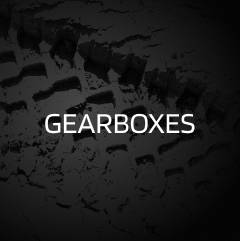 CCA Spares
CCA Spares
Land Rover Transfer Box Components – Input and Output…
The input and output shafts within the Land Rover transfer box are integral components that play a crucial role in transmitting power and ensuring the proper distribution of torque between the front and rear axles. Let’s explore the functions and significance of these shafts in the transfer box system.
Input Shaft:
Overview: The input shaft serves as the starting point for power transmission within the transfer box. It receives power directly from the vehicle’s transmission system.
Functions:
- Power Reception: The input shaft receives rotational power from the transmission, initiating the transfer process within the transfer box.
- Transfer Ratio Initiation: The configuration of gears on the input shaft determines the initial transfer ratio, influencing the distribution of power.
Output Shafts:
Overview: The output shafts transmit power from the transfer box to the front and rear axles, ultimately driving the wheels.
Types of Output Shafts:
- Front Output Shaft: Connects to the front axle, transmitting power to the front wheels.
- Rear Output Shaft: Connects to the rear axle, transmitting power to the rear wheels.
Functions:
- Power Distribution: The output shafts distribute power to the front and rear axles based on the selected transfer mode.
- Adaptability: The configuration of gears on the output shafts, combined with the selector mechanism, allows for adaptability to different driving conditions.
- Torque Transfer: Ensures the transfer of torque to the wheels, facilitating movement in various terrains.
Differential:
Overview: While the differential is often associated with the axle system, it plays a crucial role within the transfer box as well. The differential within the transfer box ensures that power is distributed appropriately between the front and rear output shafts.
Functions:
- Speed Differentiation: Allows for speed differentiation between the front and rear axles, facilitating smooth turns.
- Traction Optimization: Optimizes traction by allowing the wheels to rotate independently, adapting to varying surface conditions.
- Enhanced Maneuverability: The differential enhances the Land Rover’s ability to navigate diverse terrains with stability and control.
Adaptability and Off-Road Capability:
- High Range Mode:
- In high range mode, power is evenly distributed between the front and rear output shafts, suitable for regular on-road driving conditions.
- Low Range Mode:
- Low range mode alters the transfer ratio, providing maximum torque at lower speeds, ideal for off-road and challenging terrains.
- Center Differential (if equipped):
- Some transfer boxes include a center differential, allowing for torque distribution between the front and rear output shafts. This enhances performance on diverse surfaces.
Maintenance and Care:
- Regular Lubrication:
- Proper lubrication of both input and output shafts ensures smooth rotation and reduces friction.
- Inspections:
- Periodic inspections of shafts, gears, and associated components help identify wear or damage early on.
- Addressing Leaks:
- Addressing any leaks around shaft seals is crucial to prevent fluid loss and maintain proper lubrication.
In conclusion, the input and output shafts, along with the differential, are essential components within the Land Rover transfer box, contributing to the vehicle’s adaptability and off-road capabilities. Regular maintenance ensures the longevity and optimal performance of these critical transfer box elements.
